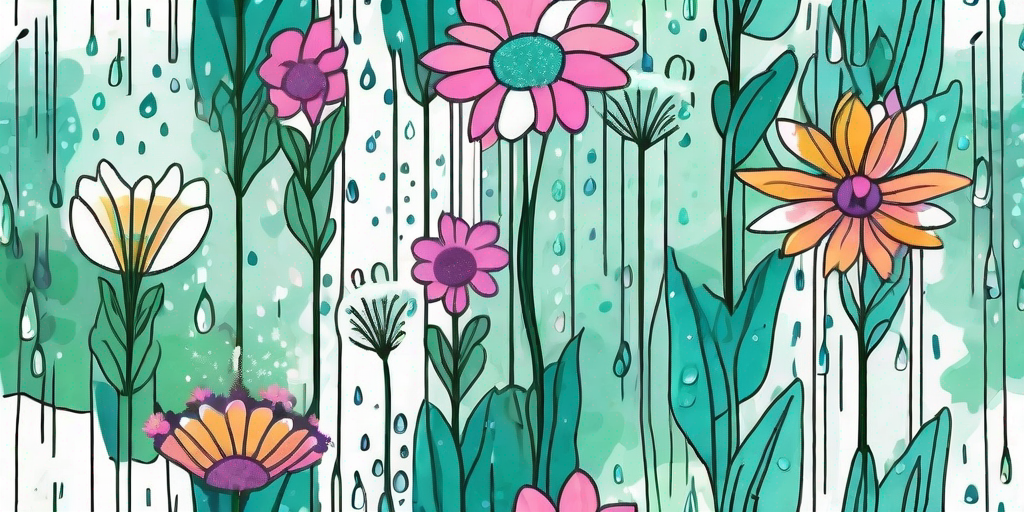
Welcome to the world of horticulture, where the secret to blooming beauties lies not just in the quality of your soil or the amount of sunlight they receive, but also in the hydration they receive. Yes, you heard it right! The secret to perfectly watered flowers is a hydration station. Now, you might be wondering, "What on earth is a hydration station?" Well, buckle up, because we're about to dive into the nitty-gritty of flower hydration.
The Basics of Flower Hydration
Before we get into the details of a hydration station, let's first understand the importance of hydration for flowers. Just like us humans, flowers too need water to survive and thrive. Water acts as a medium for nutrients to travel from the soil to the plant, and also helps in photosynthesis, the process by which plants make their food.
However, watering your flowers isn't as simple as pouring a bucket of water on them and calling it a day. Too little water and your flowers will wilt; too much water and they might drown. The key is to find the perfect balance, and that's where a hydration station comes in.
What is a Hydration Station?
A hydration station, in the simplest terms, is a system that ensures your flowers get the right amount of water at the right time. This could be anything from a simple watering can with measurements, to a complex irrigation system with timers and sensors. The goal is to take the guesswork out of watering your flowers, and make it as efficient and effective as possible.
Now, you might be thinking, "That sounds complicated and expensive." But fear not! There are hydration stations for every budget and level of gardening expertise. And the best part? You can even make one yourself!
How to Create Your Own Hydration Station
Step 1: Assess Your Needs
The first step in creating a hydration station is to assess your needs. How many flowers do you have? What types are they? How much water do they need? Once you have these answers, you can start planning your hydration station.
For example, if you have a small garden with a few potted flowers, a simple watering can with measurements might be enough. But if you have a large garden with different types of flowers, you might need a more complex system with timers and sensors.
Step 2: Choose Your Tools
Once you've assessed your needs, it's time to choose your tools. There are many options available, from simple watering cans and hoses, to complex irrigation systems and smart watering devices. The key is to choose tools that fit your needs and budget.
Remember, the goal is not to have the most expensive or advanced tools, but to have tools that make watering your flowers efficient and effective.
Step 3: Set Up Your Hydration Station
Now comes the fun part - setting up your hydration station! This will depend on the tools you've chosen, but generally involves setting up your watering devices, setting timers if necessary, and making sure everything is working properly.
Don't forget to test your hydration station before using it on your flowers. The last thing you want is to flood your garden or leave your flowers parched because something went wrong.
Benefits of a Hydration Station
So why should you go through all this trouble to set up a hydration station? Well, there are several benefits to this approach.
Firstly, a hydration station takes the guesswork out of watering your flowers. No more wondering if you're watering too much or too little. With a hydration station, you can be sure your flowers are getting just the right amount of water.
Secondly, a hydration station can save you time. Instead of having to water your flowers manually every day, you can set up a system that does it for you. This can be especially useful if you have a large garden or if you're often away from home.
Finally, a hydration station can help conserve water. By ensuring that your flowers get just the right amount of water, you can avoid wasting water. This is not only good for your wallet, but also for the environment.
Frequently Asked Questions
1. Can I use a hydration station for indoor plants?
Yes, you can! In fact, a hydration station can be especially useful for indoor plants, as they often require more precise watering than outdoor plants.
2. How much does a hydration station cost?
The cost of a hydration station can vary greatly depending on the complexity of the system and the tools used. A simple hydration station with a watering can and measurements can cost less than $20, while a complex irrigation system with timers and sensors can cost several hundred dollars.
3. Can I make a hydration station myself?
Absolutely! With a bit of planning and some DIY skills, you can create your own hydration station that fits your needs and budget.
Conclusion
So there you have it - the secret to perfectly watered flowers is a hydration station. Whether you're a novice gardener or a seasoned horticulturist, a hydration station can make your life easier and your flowers happier. So why wait? Start planning your hydration station today!
And remember, the key to a successful hydration station is not the tools you use, but the care and attention you give to your flowers. After all, as the saying goes, "The best fertilizer is the gardener's shadow."















